Excited about starting your own streaming service? We’re right there with you! But how do you choose between the DIY route or letting a white-label OTT platform handle the technical side for you?
We go into all the pros and cons of DIY vs white label OTT to help you balance cost-effectiveness with long-time ROI, so you can build a scalable service that reliably delivers a top-tier user experience under your own brand that offers multiple monetization options.
Building an OTT service: what does it involve?
The OTT business model is about going ‘over-the-top’ to provide your audience with on-demand content. You have ownership over your platform, and your audience is paying you directly for access to your content. So think the Netflix-style experience, with tiered pricing, apps and on-demand streaming from multiple devices.
This could be an independent streaming service like Means TV:
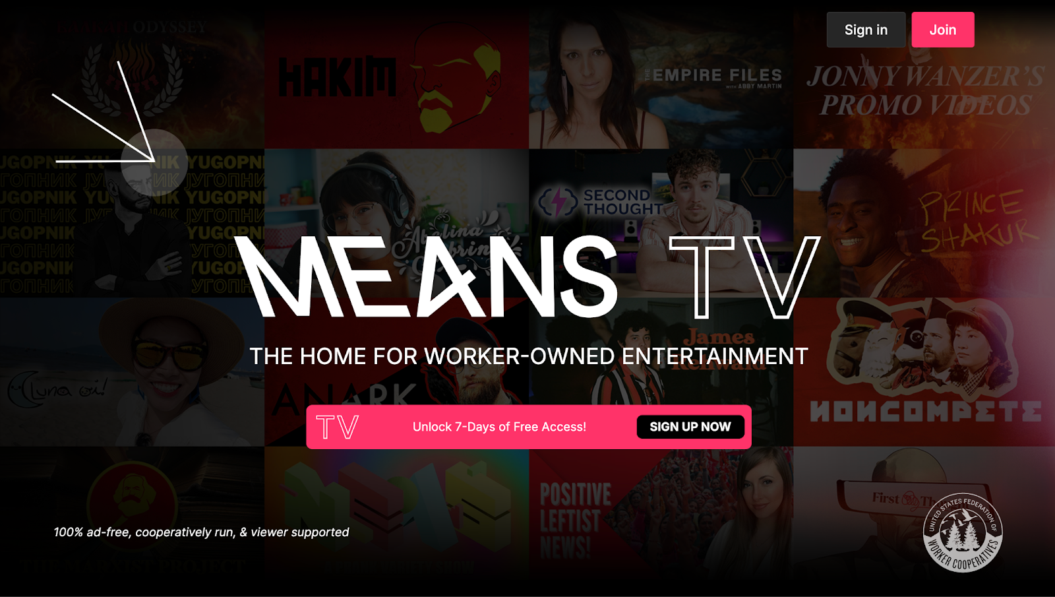
Or a niche membership like Art for Kids Hub:
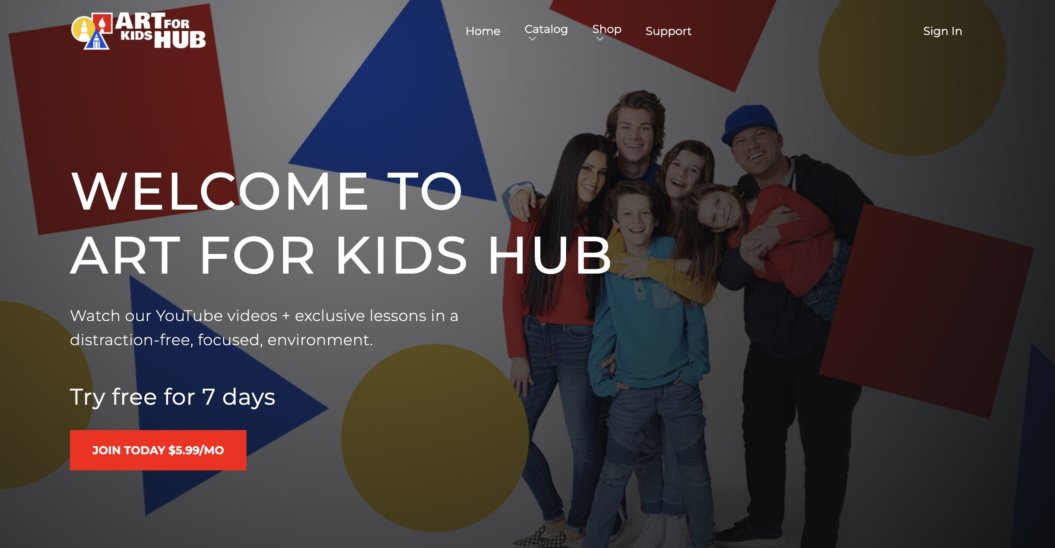
Need inspiration? Check out these high-converting membership site examples from creators who have built their streaming services using Uscreen.
There are two main ways to go about building your own OTT service:
1. White label OTT: What exactly is it?
A white-label OTT platform gives you everything you need to build your streaming service in exchange for a monthly fee. It’s ideal for creators who don’t want to get bogged down in the technical side of things and need an accessible way to get started with access to technical support and built-in features.
Take the successful Pilates for Runners membership, for example. Liz was running her membership business by herself and didn’t have the time (or the tech savviness) to spend on managing software and troubleshooting technical issues.
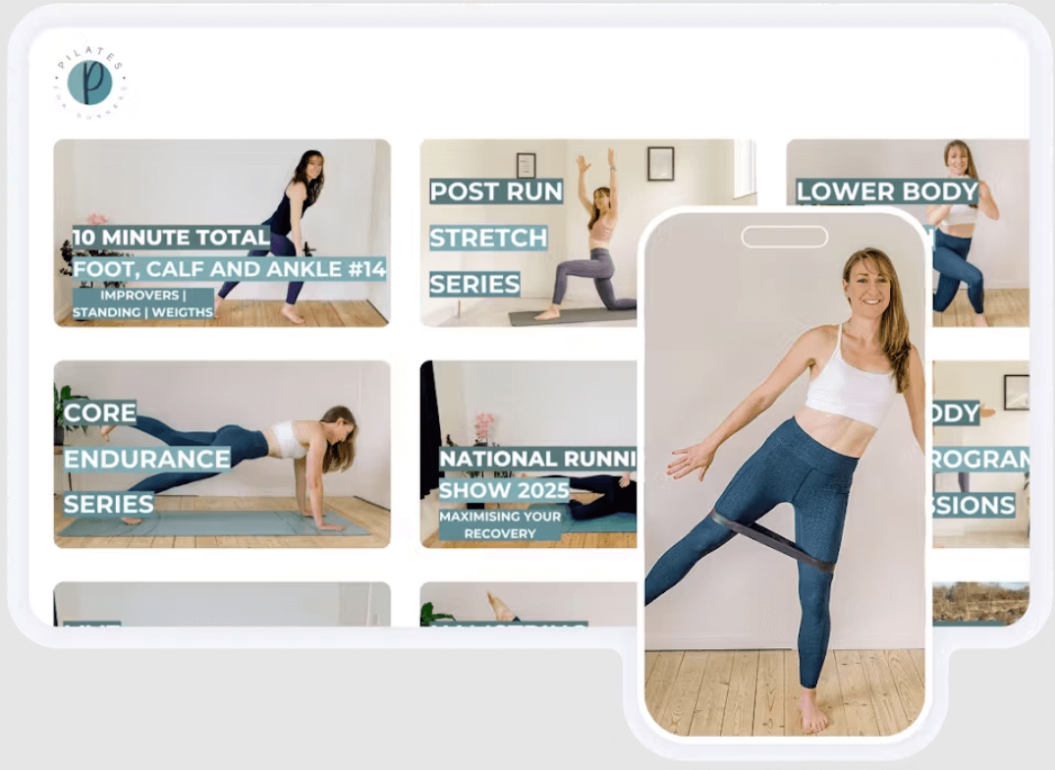
Now that she’s found the right platform with Uscreen, her membership is booming: driving $6,600 in monthly recurring revenue with an average member growth rate of 14.2% a month.
I still don’t have a lot of tech experience, but with Uscreen, I don’t need to. If there’s ever a problem, I just message them and they sort it out. Everything just flows. It’s easy to move content around, categorize it, and make it digestible for my audience.
Liz Patient, Founder of Pilates for Runners
White label OTT is a popular option with creators and media businesses because it’s an easy and accessible way to create and launch a streaming service.
Jump ahead to a deeper dive into the pros and cons.
2. DIY (build it yourself): what do I need?
If you want to go down the DIY route, there are two options. You can build a site on WordPress (or your preferred website provider) and use membership plug-ins and external video hosting to create your streaming service.
Or, you can hire a developer to create it for you. This is your best bet if you’re not technically minded to ensure you get a professional end result. And if you wanted to expand into launching apps, you’d definitely need a developer’s expertise.
There are 2 potential reasons for the DIY route:
- You’re starting with a small budget and want to test out your idea before committing to the ongoing investment of an all-in-one platform. In this case, DIY with WordPress (or your chosen website provider) is a good starting point until you’re ready to scale your offering.
- You’re a large company and want to build something bespoke with specific feature needs (like Netflix’s tailored recommendations for example). Hiring a developer with the right level of experience and expertise is important to ensure you get the exact functionality you want with a professional, high quality look and feel.
Next we’ll look at the pros and cons of both options to help you narrow down which choice might be better for you.
Option 1: White label OTT
The benefits of using an OTT platform
It’s easy and accessible
Let’s start with the most obvious benefit: using an OTT platform is much easier than trying to create a video streaming service by yourself. All the features you need are built-in, and you can create your website and video catalog in minutes using the tried-and-tested templates that are ready for you to use. Saving you a lot of time, effort and, let’s face it, frustration.
Check out Filmmaker’s Academy for example. Their video catalog is organized, easy to navigate and has clear pathways to take action (sign in, join or click into the community or calendar):
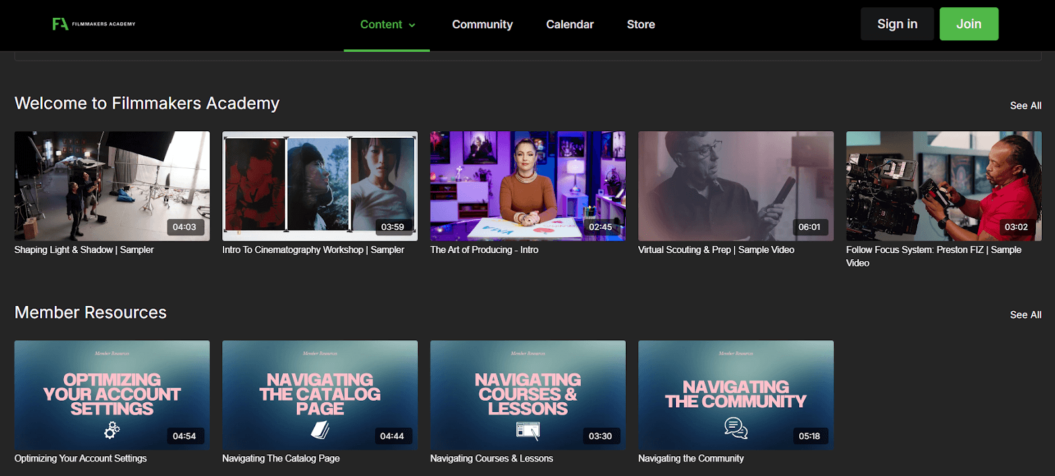
What I love most about Uscreen is the comprehensive backend feature set. It’s like playing an instrument—I manage push notifications, email broadcasts, upselling functions, and abandoned cart features all within the Uscreen platform. I no longer have to rely on a bunch of different plugins or sites to get things done…whether it’s our marketing team, editorial team, or operations—we can all access and manage the membership seamlessly.
Brendan Sweeney, CEO of Filmmakers Academy
Built-in features
Think about everything you need to provide to make a top-notch streaming service. You don’t just want the basics, you want to give your audience the best possible experience, stand out from the competition and create something that’s giving your business the opportunity to scale.
To do that you need the right features. We’re talking:
- Netflix-style video catalog
- High quality streaming
- Mobile and TV apps
- Live streaming
- Community
- Monetization
- Payment processing
- Marketing and analytics tools
- Website builder

Imagine trying to piece all that together from scratch (honestly, the prospect makes me want to hide under my desk and never come out).
The DIY route would require you to find plug-ins or get these features built for you, and inevitably, you’d have to juggle multiple platforms to make that work. While it’s a pain, the risk factor here is not being able to maintain a high quality service for your users, which could cause you to lose them.
Access to technical support
A saving grace for creators who aren’t technical whizzes, using an OTT platform gives you ongoing access to a technical support team. If something breaks, or issues crop up, then you have support at hand to fix it for you.
Even if nothing breaks, there are ongoing maintenance and bug fixes to consider, which are an inevitable part of running a website or app to ensure your security, operating system and performance is all up-to-date.
I still don’t have a lot of tech experience, but with Uscreen, I don’t need to. If there’s ever a problem, I just message them and they sort it out. Everything just flows. It’s easy to move content around, categorize it, and make it digestible for my audience.
Liz Patient, Founder, Pilates for Runners
💡Pro tip: Look carefully at the level of support offered with each OTT platform. Some have limited support for their lower price tiers or only offer access to support during dedicated hours. Even better, look for a platform that offers technical support to your end-users, too.
The drawbacks of using an OTT platform
While there are lots of benefits to using an OTT platform to create a branded experience, it’s important to be aware of the potential cons to this route:
- Potential for limited customization – While an OTT platform enables you to white-label with your own branding, you might be restricted about the layout of your site or apps if you’re building them from a template. This might be a sticking point for businesses that need something truly bespoke.
- Ongoing costs – The monthly fees for an OTT platform can be expensive, especially if you have custom needs. This can be a barrier for creators starting out. The good news is that even if you start with the DIY route, you can migrate to an OTT platform in the future when you’re ready to scale.
- Ownership and control – When you launch apps with an OTT platform, you’re technically leasing them. This means if you decided to move away from that platform in the future, your app would no longer be supported and you’d need to migrate it onto another platform.
Option 2: DIY route (build it yourself)
The benefits of DIY
Complete creative control
The main advantage of the DIY route is it gives you the freedom to build your platform however you like. Every decision is down to you – from the look and feel, to the features and layout. If you know how to code and are comfortable using open source tools, you can use your creativity to build something unique and bespoke.
If not, getting help from a developer is key to building a platform that’s high-quality, user-friendly and visually appealing.
Budget-friendly for beginners
If you’re going DIY and doing the work yourself, starting out with WordPress hosting and plug-ins to enable the right video features is a lot less expensive than paying for an OTT platform. This makes it more accessible for beginners as it’s less of a commitment, giving you the time and flexibility to test out your idea and gradually expand.
Stand out from the competition
If your motivation is more about building bespoke features and functionality you might not get from an OTT platform, this puts you ahead of your competitors because you’re offering something new and different. This might mean you could charge more, and meet the needs and expectations of your niche in a new and innovative way.
The drawbacks of building it yourself
- Technical ability – To build a professional and high quality streaming service on your own requires the right skills to do it well. Streaming quality, speed and security are all crucial aspects to consider, and it can quickly turn into a lot of work to manage and get right.
- Slower timeline to launch – Building a streaming service from scratch takes a lot more time than launching with an OTT platform (where you can get set up in a matter of days). It can take months of work, depending on your resources, and if you’re paying a developer, the costs are much higher.
- No ongoing support – Once your site is up and running, you’ll have to maintain it yourself. This means if any errors come up or you break something, you don’t have access to support to help fix the problem. If you’ve hired a developer, they would charge extra to provide additional technical support.
Another drawback to the DIY route is that you don’t have easy access to building branded apps. You’d have to build these separately, which is a huge upfront cost.
Justin Rhodes started out using a combination of WordPress with different plug-ins and third-party apps before he moved to Uscreen:
While I was evaluating my move from my traditional member program software, I needed something that people could consume easily on a phone, not just through a browser or so through an app. And they could easily consume on TV and something that tied and communicated those things so you could start something on your phone, pause and eat dinner, finish it on your TV.
Justin Rhodes, Founder of Abundance+
He was battling with limited features and a streaming service that viewers couldn’t seamlessly watch between devices, and no support for TV. Which was far from the experience he wanted to provide. Since launching with Uscreen, Abundance+ successfully drives $1M+ in annual revenue, with 7,700 active members, with 76% of viewership coming directly from the apps.
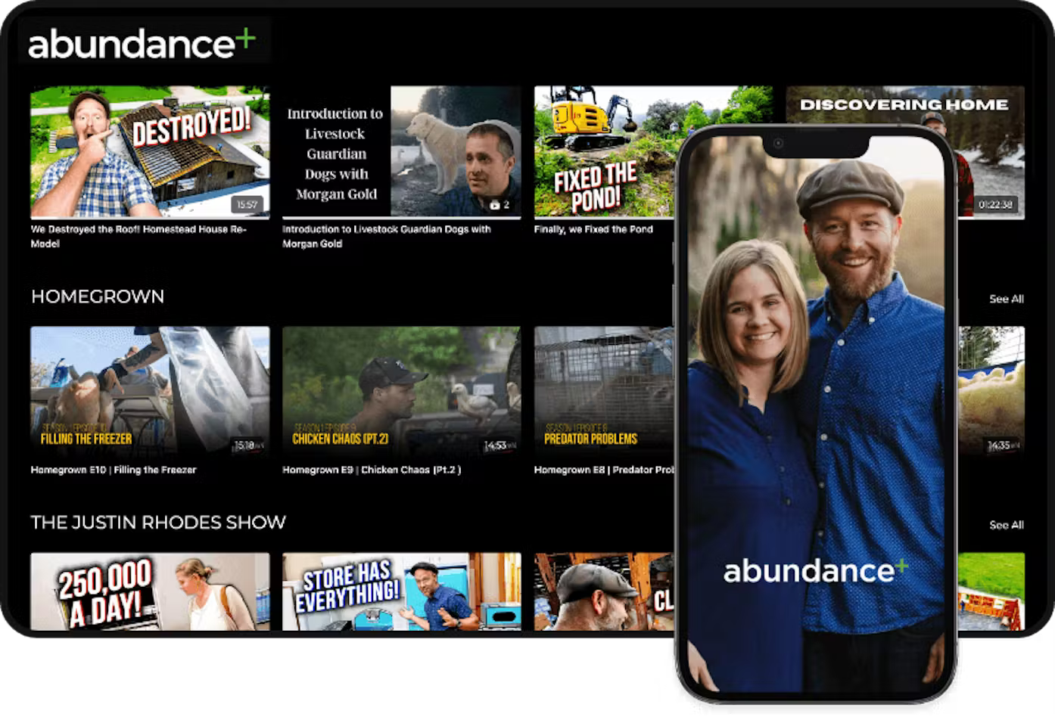
We went from $30,000 a month to over $130,000+ a month with the Abundance+ launch with Uscreen. When I look at that number, I am absolutely blown away and honored because that means I’m bringing a lot of service into the world. That’s the measure of success.
Justin Rhodes, Founder of Abundance+
DIY vs white label OTT: Key factors to consider
1. Budget & costs
If you’re going DIY you have two options available to you: hiring a developer or building it yourself. Hiring a developer is a high upfront cost. It can vary from anywhere between $50K- $500K. The estimated cost will depend on the scale and features you want, the developer’s rates and the time needed to create your platform.
If you’re planning to do the work, you’ll need to budget for all the individual tools you need. This will include hosting, bandwidth, plug-ins, design tools and video storage. Carefully look at all the pricing options and consider what will meet your needs long-term.
OTT platforms charge a fixed monthly fee, plus charges for subscriber fees. This is easier to budget for because everything is included in the price, but make sure you’re clear on exactly what you’re getting with your price plan and whether it’s affordable for your budget.
Key takeaways:
- High upfront investment vs ongoing monthly fees
- All-in-one vs multiple individual costs
- Choose the option that suits your needs, budget and technical ability
2. Technical expertise & resources
Your technical ability is a big factor in making this decision. But it’s not just about your skills, it’s about the time and resources you have available to you. Even if you can build a platform by yourself, there’s a lot of work involved in running a streaming service. Which you have to balance with content creation, and marketing too.
Do you have a team to share the workload? Or the budget to hire developers, editors, designers, marketers or managers to support you as your business grows?
Find What Feels Good found the right balance for their small, creative team which gave them the space to focus on what they do best:
Hitting the 46,000 monthly member mark was a huge milestone for us, and Uscreen was an important part of getting us there. Uscreen has changed how we allocate our team resources because we no longer need a lot of the tech things that we needed before. We’ve always wanted to just be a creative team that’s focused on content creation—not building apps or figuring out how to sync up databases to do basic stuff. So Uscreen has allowed us to just not worry about any of that anymore
Chris Sharpe, Co-Founder & COO, Find What Feels Good
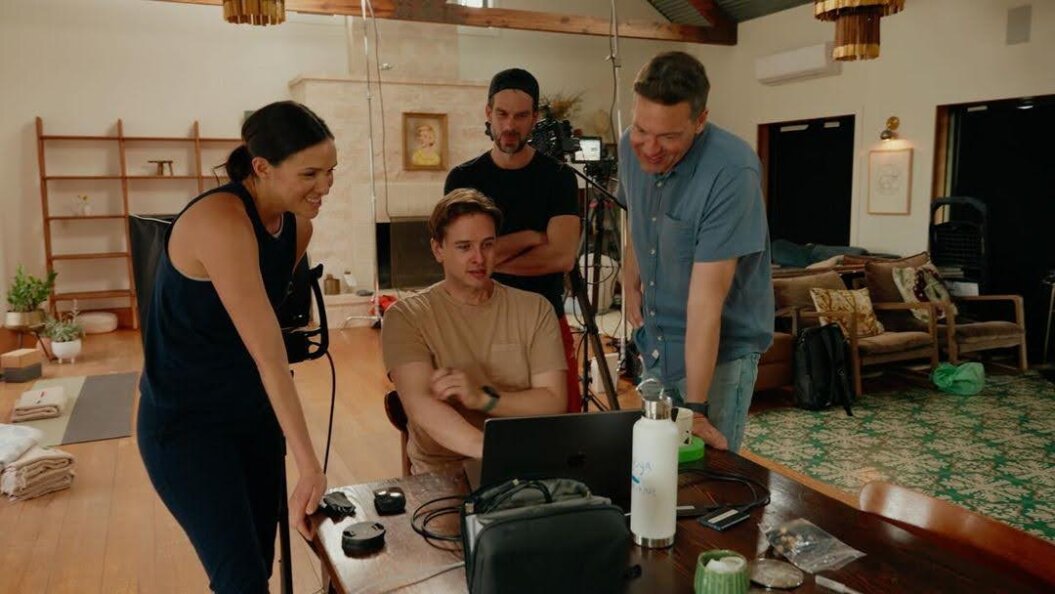
Key takeaways:
- Are you comfortable with building and maintaining a streaming site on your own?
- How much time and resources do you have to spend on managing and maintaining your site?
- Are you a one-person operation, or do you have a team?
3. Time-to-market
How quickly do you want to launch your streaming service and start making a profit?
The DIY route can take up to 6-12 months, depending on the complexity of your platform. In comparison, you could launch with an OTT platform in as little as 30 days.
Take Body By Barre, for example. Natalie launched her fitness membership with Uscreen and went from 0- 1,000 members in the first month. Today, her membership has over 7,500 members and is driving $10,500 in monthly revenue, with 3 custom branded mobile and TV apps.

I didn’t have to worry about all the technical aspects because Uscreen was there to help me. They walked me through how to structure my membership, how to price it, and how to make sure everything was clear to my audience. Even today, if I have any technical issues, I know I can reach out and get a response within hours. It makes everything so much easier.
Natalie Rose, Founder of Body by Barre
Key takeaways:
- Large time investment vs a couple of weeks
- Start earning quicker with an OTT platform
- Clear return on investment for Uscreen built services
4. Monetization options
How do you want to monetize your platform?
OTT platforms offer built-in monetization (typically including SVOD and TVOD) to make it simple for you to earn directly from your audience. If you’re considering a specific OTT platform, check that they support the monetization models you want to use. For example, some platforms support advertising and revenue sharing, while others focus on subscription-based models.
If you’re going DIY then you have no restrictions, but you’ll need to build monetization into your platform and ensure you’re including the options your niche audience wants.
Key takeaways:
- Choose the right monetization models for your business
- Be clear on platform restrictions
- Earn directly from your audience
5. Scalability & performance
The DIY route can be fully optimized for specific needs but it requires infrastructure management. The more you scale, the more robust your platform needs to be to handle higher numbers of subscribers streaming video, or tuning into live streams.
OTT platforms use established CDNs and cloud hosting for easy scaling. Ongoing maintenance and updates are handled by the platform, so you don’t need to worry about it.
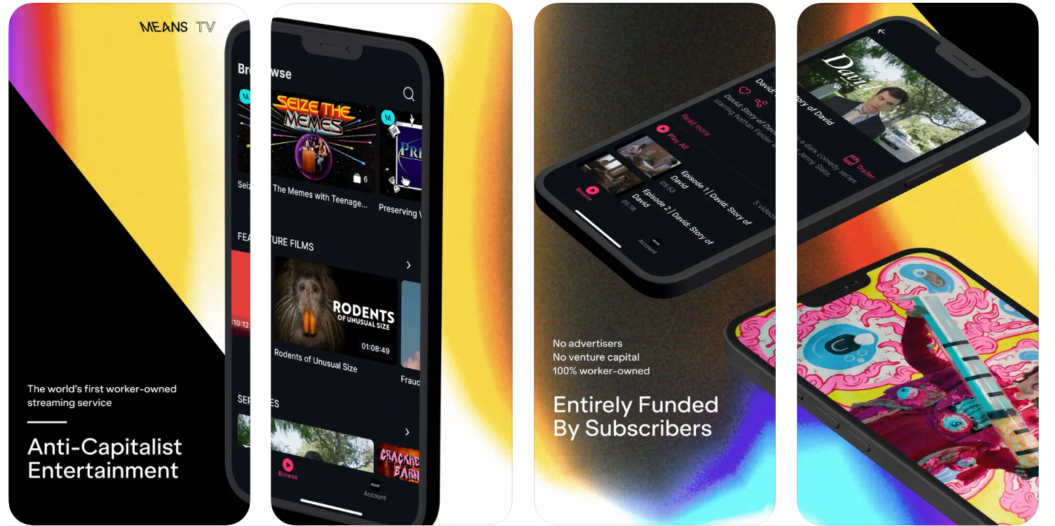
Apps gave us an air of legitimacy and got rid of any barriers to accessing the content. We’re available on all the same platforms as the big streaming services, and pose a real alternative option.
Means TV
Key takeaways:
- Do you have the skills and resources to manage ongoing maintenance?
- Ensure your site is set up to handle increasing numbers of subscribers
- High-speed streaming is a priority for video
Who should choose DIY vs. white label? (your decision guide)
Go DIY if…
✅ You have a large budget and in-house development expertise.
✅ You need full control over the technology stack and features.
✅ You plan to scale into a major streaming service.
Go white label OTT if…
✅ You want to launch quickly and affordably.
✅ You lack technical expertise but need a professional-looking OTT service.
✅ You’re a content creator, small business, or niche brand that prioritizes ease of use.
Build, launch and manage your membership, all in one place.






